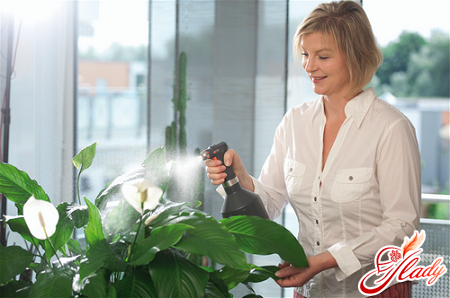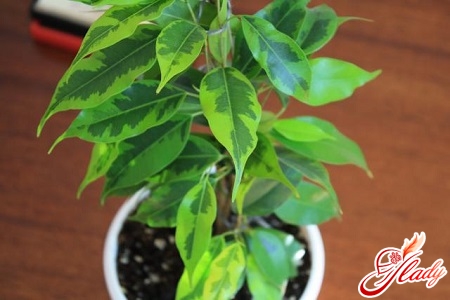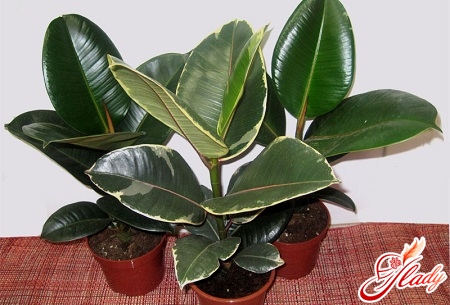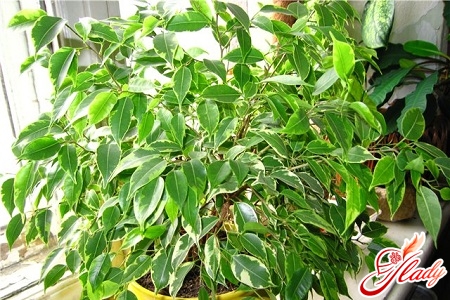 And so we waited.Spring! Blissfully squinting at the warm (already warm!) sun, we meticulously examine our “land holdings” and anticipate the beginning of a new gardening season. Well, even if there is a ton of work to do, even if the snow has not melted everywhere, even if spring puddles are squelching underfoot… The main thing is that the garden has woken up. And we, like a beloved child, are ready to wash it, comb it, feed it and take care of it. It is clear that everything in the garden craves our care and guardianship. So let’s start, for example, with the green carpet of our garden – the lawn. After all, in fact, caring for a lawn in the spring is very similar to caring for a child who has just woken up. But even if (from your point of view) it is not very similar, you will still have to put in a lot of effort to “bring to life” the lawn that has emerged from under the snow cover. What do we need to do? Here is a short list of all the resuscitation and health procedures that make up lawn care in the spring:
And so we waited.Spring! Blissfully squinting at the warm (already warm!) sun, we meticulously examine our “land holdings” and anticipate the beginning of a new gardening season. Well, even if there is a ton of work to do, even if the snow has not melted everywhere, even if spring puddles are squelching underfoot… The main thing is that the garden has woken up. And we, like a beloved child, are ready to wash it, comb it, feed it and take care of it. It is clear that everything in the garden craves our care and guardianship. So let’s start, for example, with the green carpet of our garden – the lawn. After all, in fact, caring for a lawn in the spring is very similar to caring for a child who has just woken up. But even if (from your point of view) it is not very similar, you will still have to put in a lot of effort to “bring to life” the lawn that has emerged from under the snow cover. What do we need to do? Here is a short list of all the resuscitation and health procedures that make up lawn care in the spring:
- remove all last year's withered grass, remove the "winter" debris and comb the lawn;
- if our lawn has reached the age of one year, then we roll it up;
- we feed fertilizers (it is better complex, but it is possible and special);
- if our green carpet covers clay soil, then we spend sanding;
- We fight with weeds (yes, in the spring!);
- we carry out minor cosmetic repairs: "darn" carpet, sowing seeds or laying a ready sod.
It would seem that there are not so many procedures. But they must be carried out conscientiously and efficiently. Let's consider how exactly.
Preparatory work
Lawn care at the beginning of the season starts exactlywith preparatory work. First, completely clear the lawn of any remaining snow, if it is still lying in secluded corners. Carefully break up the ice crust with a shovel and scatter the snow in a sunny spot. Clean and deepen the drainage ditches to quickly drain the melt water. And patiently wait for the lawn to dry completely. Do not forget that this waiting should be accompanied by control over the snow melting process itself. Make sure that it melts evenly, so that puddles do not appear on the lawn, and if they do appear, they do not stagnate. At this time, minimize any movement on the damp lawn so that tracks, potholes and ruts do not damage the turf. At the same time, carry out the first top dressing with a complex fertilizer enriched with nitrogen. At the rate of thirty to fifty grams per square meter, we scatter the fertilizer over the entire lawn (while the remaining snow melts and the soil dries, the fertilizer granules will dissolve). After waiting for the lawn to dry, we begin combing.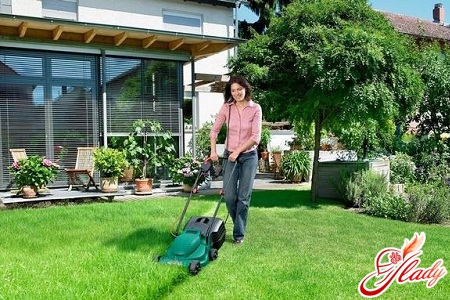
Carding the lawn
Actually, this procedure has quite scientific reasons.names "verticulation" and "scarification". Why do we need a spring lawn trim at all? The fact is that during the autumn-winter hibernation, the so-called felt is formed on the lawn. This is, first of all, compacted and compressed remains of lawn grass, winter debris, fallen leaves, twigs, traces of the life of birds and insects. In addition to the felt, a dry and hard crust forms on the soil. This very felt we need to comb out, and loosen the crust. If we leave everything as is, then not only will we provide oxygen starvation to our lawn, but we will also contribute to the emergence of grass diseases and the settlement of insect pests. So lawn care in the form of verticulation and scarification is simply vital (for the lawn, of course). It is best to carry out this procedure with an ordinary rake. But if you have a verticulator, you can use it, setting it so that it only slightly "scratches" the soil. First, take a twisted rake and go along and across the lawn (possibly more than once). After the twisted rake, arm yourself with a fan rake and again - along and across, but with a little less effort. As a result, we will collect all the garbage and plant residues, and also slightly loosen the soil. What is not collected by the rake, we try to remove with a garden vacuum cleaner, and if there is none, then collect it by hand. If during the melting of the snow it was not possible to carry out the first spring fertilizing, then do it immediately after the combing procedure. And then we proceed to the next procedure - breathing exercises.
Breathing exercises for the lawn
It's just an integral part of overall care.lawn. This procedure is called aeration. Its essence is in artificial saturation of the soil with air, which helps the oxidation of organic matter and the absorption of nitrogen (if you do not know, then it is absorbed by aerobic bacteria). In addition, aeration allows you to rid the turf of carbon dioxide accumulated over the winter, which slows down and even stops the growth of lawn grass. Special devices called aerators have been invented for this procedure. Different models of such equipment have different teeth: root-forming, cutting, solid, or hollow. But the absence of a special device should in no way interfere with aeration. This can be done using ordinary garden pitchforks. Take a pitchfork with simple or hollow teeth and methodically go over the entire lawn, piercing the ground to a depth of ten to fifteen centimeters (but not less than eight). It is clear that we will hardly have enough strength and patience for the entire area, so for more frequent punctures we select only areas with the strongest compaction of the turf. The rest of the lawn area is aerated selectively. Well, half the job is done. There is still a little left and we can consider that the main procedures of spring lawn care are completed. Let's start fighting weeds!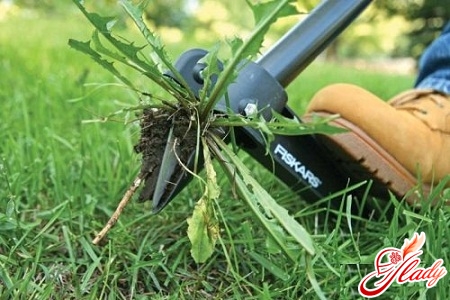
Weed control
Oh, these ubiquitous weeds!And the lawn is not an obstacle for them: they grow as if nothing had happened and even adapt to systematic mowing. Of course, if the sight of a lawn “clogged” with unnecessary grass and flowers does not bother you much, then you can skip this procedure. But keep in mind that soon the lawn will turn from cultivated to natural. Although this type of lawn is not so bad, it is just less aesthetically pleasing. If the weeds on your lawn are completely unwanted guests, then you will have to “show off” these guests. Yes, this is also lawn care, and you can only get rid of weeds mechanically or chemically. The mechanical method is nothing more than ordinary weeding. If there are very few weeds (or you just like weeding), then start this procedure immediately after aerating the lawn. By the way, on small lawns and for large weeds, weeding can be very effective, especially if you use a special shovel or root extractor. But if this method of control does not appeal to you, then there is nothing left to do but resort to chemicals. Herbicides will help us in the fight against weeds - chemical preparations for the destruction of weeds. For the lawn, we choose selective herbicides that are not dangerous for the lawn grass. Look at the instructions for use directly on the preparation. In extreme (and especially severe) cases, we also use continuous action herbicides, for example, the well-known "Roundup". But it must be used very, very carefully, carefully lubricating the leaves of individual weeds with liquid and not allowing it to get on the lawn grass. But it is best (for greater effect) to fight weeds both mechanically and chemically - in a comprehensive manner! And in parallel with the destruction of weeds, we also carry out repairs to our "carpet": we level the edges, sow seeds in bald spots or "darn" them with ready-made turf, for example, pieces of rolled lawn. By the way, caring for a roll lawn after winter is practically no different from caring for a regular lawn. It also needs to be combed, fed, aerated and weeded. And in May, you can already do the first mowing. And then, with a sense of accomplishment, enjoy the silky green carpet in your garden. And get not only physical pleasure (bare feet and on the grass!), but also aesthetic pleasure.




